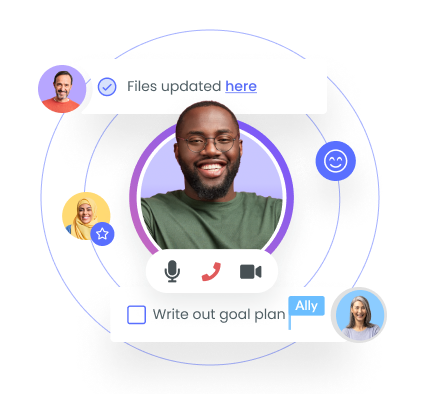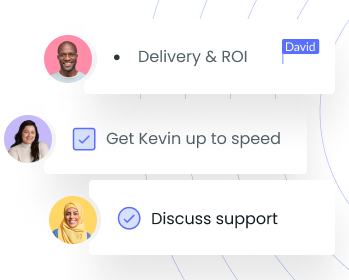Customer Hand-Off Meeting Template
Once a deal is closed, the CS team now takes over. Use this Customer Hand-Off Meet...
View templateOnce a deal is closed, the CS team now takes over. Use this Customer Hand-Off Meet...
View templateThe first step in acquiring a new client in a legal department is typically the in...
View templateUse this Marketing Agency Client Meeting Template to conduct a 1-on-1 with your cl...
View template
Onboarding is a crucial step in creating a community of users that frequently use ...
View templateCustomer Success should meet with high-priority accounts to collect feedback and i...
View templateOne of the most important steps in client onboarding is the kickoff meeting. Use t...
View template
Run client review meetings that tell a clear story about your data and exceed clie...
View templateAre you an account manager or agency owner? Use this meeting template to introduce...
View templateDid you sign a new client to your marketing agency? Use this Marketing Agency Clie...
View template
Use this template to ensure that all stakeholders are identified before the projec...
View templateWhile interviewing skills are critical to a lawyer’s success, few are ever train...
View templateStreamline legal meetings with recommended talking points covering introductions, ...
View template
Client meetings are professional engagements where service providers and their clients meet to discuss the client’s needs and how the service provider can best support them. These meetings can take place place in-person, over the phone, or via video conferencing platforms and are a great opportunity to promote collaboration and communication.
When conducting a client meeting, the first steps happen before the meeting even takes place. Prepare for the meeting by researching attendees in advance, ensuring that all the relevant people are invited, and building out an agenda that covers all the talking points that you want to discuss. Then when it comes time for the meeting, use the agenda as the general outline for your meeting and check off discussion topics as you go, being sure to address client concerns and goals. As the meeting wraps up, summarize the key points and outline next steps. Once the meeting has ended, follow-up with the minutes of the meeting or a summary of what was discussed.
While the purpose of client meetings may vary, the overall goal of these meetings is to ensure alignment on goals, expectations, and timelines. These meetings are also a great opportunity to build a relationship with the client that is built on trust, transparency, and understanding. More specific purposes for client meetings include updating the client on progress, discussing new opportunities or challenges, or making decisions around next steps.
To make your client meetings more effective, start by creating a clear agenda and then sharing that agenda with the client to see if there is anything else that you might have missed that they would like to discuss. During the meeting, encourage active participation, actively listen to the client, focus on solutions, and document actionable next steps. Utilizing visual aids or a shared agenda is another great way to make your client meetings as effective as possible.
A well-structured client meeting typically starts with a welcome and introduction, followed by a discussion covering the following topics: project updates, concerns or issues, and opportunities. Finally it concludes with questions, a summary of what was decided or discussed, and clear next steps (including the date of any follow-up meetings).